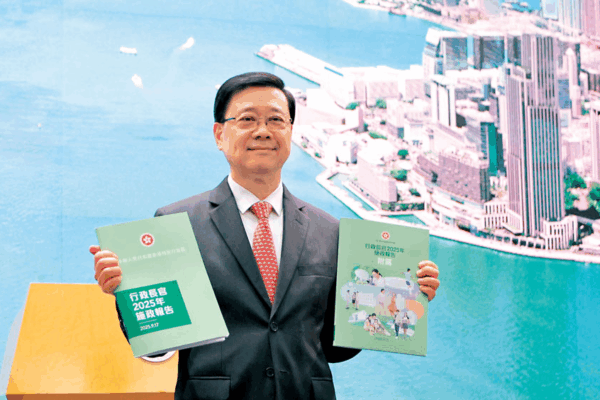
Explosive growth of family offices in Hong Kong! Four Engines Drive Global Wealth Convergence
2025-06-27
Beyond Singapore, what makes Hong Kong Asia's most cosmopolitan city?
2025-07-04Recently, Japan's National Tax Agency announced the 2025 "route price", the national average increase of 2.7%, not only for the fourth consecutive year of increase, but also the largest increase since the current calculation method!

🔍路线价:简单说,路线价是日本政府每年公布的标准土地价格,主要用于计算继承税与赠与税。虽然它不等于市场价格,但因为采样标准地点众多(全国约32万个点),而且一年更新一次,所以也被广泛用作观察地价趋势的重要指标。
The continuous rise in route prices reflects the continued rise in real estate in Japan!
Behind this boom is the powerful magnetism formed by three core strengths of the Japanese real estate market: the universality of low barriers to entry, the anti-cyclicality of stable rents, and the asset liquidity of high liquidity.

#01
Low barriers to entry:
Inclusive design that breaks down barriers to investment
The Japanese real estate market has significantly lower barriers to entry than major global economies, and its universality is reflected in three major dimensions:
Total price advantage and exchange rate dividend
In Tokyo, for example, the total price of a small apartment in the core area is generally 20-40 million yen (about 1-2 million yuan), which is only 1/3 to 1/2 of the assets in similar locations in London and New York. 2025 yen exchange rate is at a low level (1 U.S. dollar ≈ 143 yen), the cost of acquisition for overseas investors is significantly reduced.
Financing policy friendliness
Japanese financial institutions offer the same lending policies to overseas investors as to local residents, and non-resident homebuyers can apply for a loan amount of up to 50%-70%, and interest rates have long been maintained at a historically low level of below 1%.
Cost of ownership transparency
The cost of property holding in Japan mainly consists of fixed asset tax (approximately 1.4% of the assessed value of the property) and urban planning tax (approximately 0.3%), and the total tax rate is much lower than the level of property tax in Europe and the United States, which is generally 3%-5%.
This combination of "low total price + high leverage + low cost" makes Japanese real estate a very cost-effective "entry-level" option for global asset allocation.

#02
Rent stabilization:
Cash flow security through economic cycles
The rental return rate of Japanese properties has long been stabilized in the range of 3%-5%, which is significantly higher than the level of 1%-2% in domestic first-tier cities, and its stability stems from the support of three major systems:
Lease culture and rental demand
Japan's Civil Code stipulates that the standard lease term is two years, and tenants have the right of first refusal, which has given rise to a specialized rental management system. Rentals in the Tokyo metropolitan area have been rising for 12 consecutive years, and the Osaka World Expo has boosted demand for short-term rental apartments in the surrounding area, with rental premiums in core locations reaching 151 TP3T.
Dynamic equilibrium in the structure of supply and demand
Although the total population of Japan is declining, the core urban agglomerations (Tokyo, Osaka, and Nagoya) continue to attract population inflows, resulting in a pattern of "concentration of the nation's population in the three major metropolitan areas". The rising price of apartments in Tokyo's 23 wards has led to a shift in the rental market for families, indirectly pushing up rents.
Inflation hedging mechanisms
The Bank of Japan has maintained ultra-loose monetary policy for a long time, but core CPI growth remains in the 2%-3% range. Property rents are usually adjusted in line with CPI, forming a natural inflation hedge.
This "institutional security + supply and demand support + inflation-linked" rent stabilization mechanism, so that the Japanese real estate has become a global investor in the eyes of the "cash cow".

#03
High mobility:
The "hard currency" property of asset realization
The liquidity advantage of the Japanese real estate market is reflected in the dual dimensions of transaction efficiency and price transparency:
Standardized transaction process
Japan has a well-developed real estate registration system and highly transparent information on property rights, so the entire process from signing a contract to closing can be completed within 1-2 months.
Market-based pricing mechanisms
Japan's property valuation system is mature, and the appraisal reports provided by third-party appraisal organizations are widely accepted by financial institutions, resulting in a three-price mechanism of "market price - appraisal price - transaction price".
Diversified exit channels
Investors can exit through a variety of ways such as regular sale, REITs share transfer, and whole sale with lease. The size of the Japanese J-REITs market exceeds 20 trillion yen, providing liquidity backing for institutional investors.
This liquidity feature of "fast trading + accurate pricing + multiple exits" makes Japanese real estate both defensive and offensive.

The hot property market in Japan is not a result of short-term speculation, but rather a result of the three major advantages of low barriers to entry, stable rents, and high mobility.
For investors, whether it is for asset preservation, return on income, or as a "fallback" for future life abroad, Japan offers an opportunity for long-term attention and in-depth participation.


